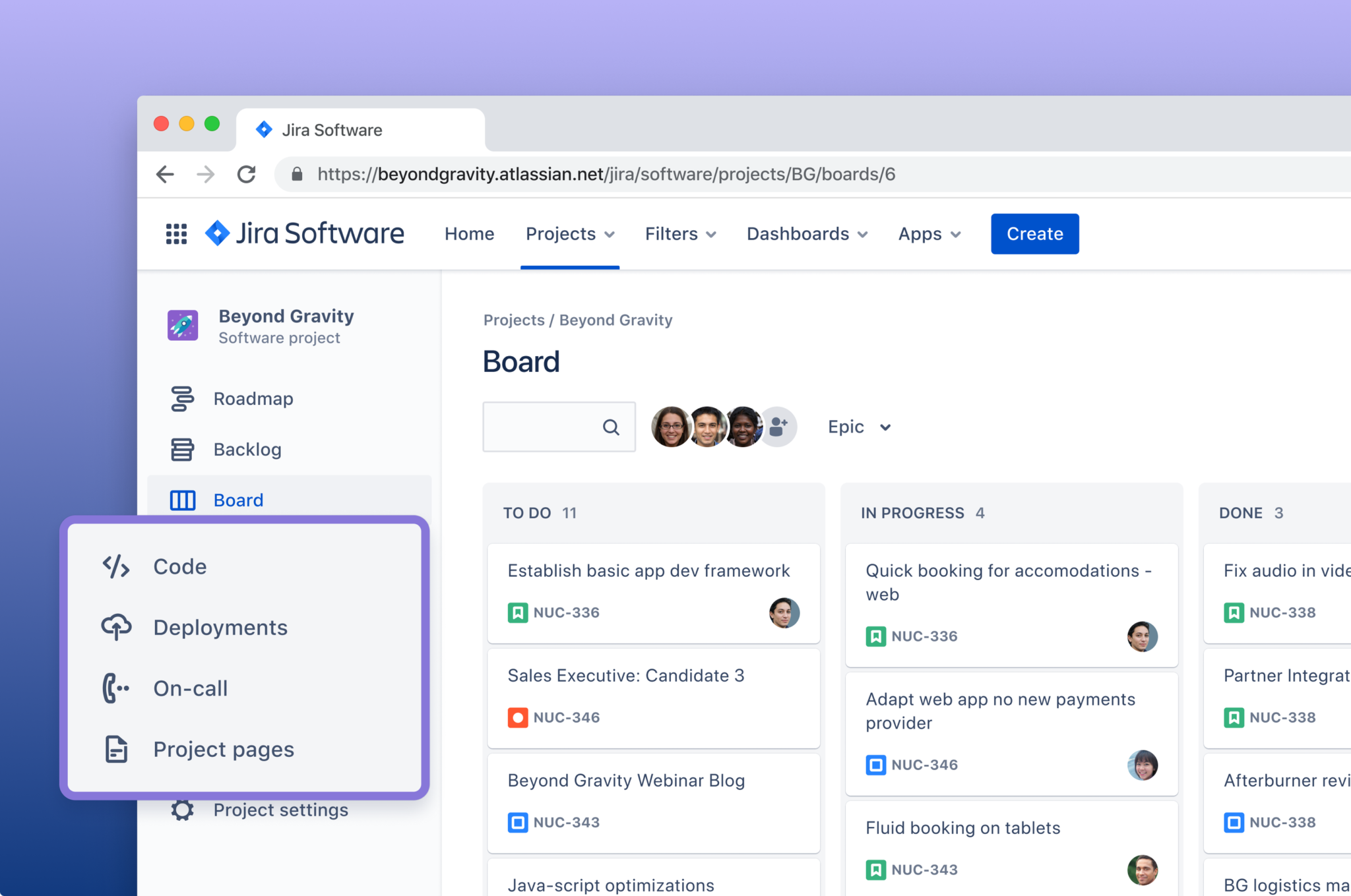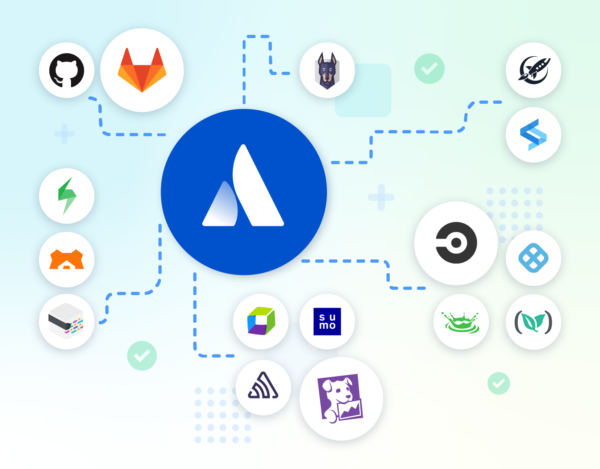Ask one hundred development teams the tools they use to ship software, and you’ll get one hundred different answers – every team is different, every project is unique, and tools evolve incredibly quickly.
But the urge to use the best tool for the job – usually a competitive advantage – can lead to an ever-growing tool stack that can be fragmented, difficult to set up and manage, and cause information silos. To address these issues, we’ve seen companies resign themselves to a disjointed best-of-breed toolchain or try to consolidate all of their tools to a single vendor. This results in teams settling for “good enough” tooling instead of great ways of working.
We believe that every software team should choose the best tools and technology without sacrificing the ability to collaborate across the company. That’s why our approach is open and integrated – open so teams can use the tools of their choice, and integrated so collaboration doesn’t come at the expense of velocity.
Today, we’re announcing Open DevOps, a development experience built on Jira that makes a diverse toolchain feel like an all-in-one. Read on to learn how we’re empowering software teams to work how they want, in the tools they want, without sacrificing coordination.

A toolchain made for “you build it, you run it” teams
For teams building and operating their own services, we’ve laid the groundwork to start shipping and operating software with a pre-configured Jira project called “Open DevOps” that combines Atlassian products and partner offerings.
The default DevOps project is built around Jira Software, Confluence, Bitbucket, and Opsgenie. With one easy click, teams can easily swap in the tools they want, including GitLab or GitHub.
“GitLab and Atlassian are both strongly committed to meeting the needs of our users. We’re proud of the work we’ve done together with GitLab and Jira integration. Our joint customers gain the autonomy to remain in their chosen context and tool, without sacrificing visibility or the ability to collaborate.” —Patrick Deuley, Senior Product Manager, Gitlab
The tools in Open DevOps are automatically connected and ready to help you take your idea from backlog to operational code. We’ve consolidated a toolchain that previously took dozens of steps to set up into six simple steps.
Unlock all of our DevOps features with Jira as the backbone
Your devs like to work in code, but the business needs to be involved in the development process, which typically meant everyone had to work in Jira by default.
That’s no longer the case. Open DevOps’ default features allow developers and the business to focus on work, rather than manually updating Jira or constant context-switching.

- Code in Jira: We’ve integrated Git repositories – including Bitbucket, GitLab, and GitHub – directly into Jira Software. Simply include Jira issue keys when you’re pushing a change or merging a branch, and Jira will update itself instantly. Jira will automatically show repos on the Code tab ordered by the most recent update, so all your stakeholders can get a sense of what your team is currently working on
- Deployments in Jira: Include the Jira issue key in your development work, and the Deployments tab will automatically populate with your deployments so it’s clear what value was shipped to customers and when. This works with any CI/CD provider, from Bitbucket Pipelines to leading tools like Gitlab, Jenkins, Azure DevOps, Circle CI, or JFrog.
- On-call schedule in Jira: If something breaks and someone needs to be paged, the On-call tab makes it a cinch to notify the right person via Opsgenie without having to ask who’s on call.
- Pages in Jira: In DevOps, culture matters just as much as tools. With Confluence embedded in Open DevOps, teams can access battle-tested templates for best practices like change management, runbooks, and post-incident reviews.
- Automation in Jira: Teams can create powerful workflows across all their development tools with Jira’s automation engine, which keeps work in sync with development activity and saves time for everyone. With triggers like “When PR is merged,” automation can run rules that update Jira issues, send Slack/Microsoft Teams messages, and more.
- Deployment frequency trends: Jira automatically calculates how often your team ships value and how this trends over time, so you don’t have to manually coordinate across tools or bug your operations team.
- Cycle time trends: Since each piece of work in Open DevOps is tied to a Jira issue, Jira can provide insights into bottlenecks that help improve team performance. Teams that need deeper service operations and support capabilities can easily integrate Open DevOps with Jira Service Management.
Extend and customize Open DevOps with our partners

Since there’s no one way to do DevOps, there’s no one DevOps toolchain that works for all teams. According to our 2020 DevOps Trends Survey, we found respondents used an average of 10 tools to move an idea to production. We can vouch for this – at Atlassian, we use dozens of tools ourselves!
Today, we already have integrations with leading testing, security, feature flagging, and observability vendors in Jira for Open DevOps. We’ll continue to make it easier to get started with third-party apps by adding them as one-click connections to Jira in future milestones.
- Security: Snyk
- Testing: Mabl, Smartbear, XRay
- Feature flagging: LaunchDarkly, Split
- Observability: Datadog, Dynatrace, Sentry, Sumo Logic
- CI/CD: CircleCI, JFrog, Codefresh, Harness, Gitlab
“Like Atlassian, Snyk inherently understands there is no one-size-fits-all approach to DevOps, which is why we enthusiastically support Atlassian’s forward-thinking vision of open and integrated DevOps,” said Leigh Moore, vice president of growth marketing and community at Snyk. “As their key security partner, we’re proud to embed our developer-friendly security technology within Atlassian tooling to enable our mutual customers to experience seamless security from wherever they work.”
We’ve started with one-click setup for code, deployments, service operations, and documentation in Jira for Open DevOps, and we’ll make it even easier to configure your entire toolchain from Jira with more first-class categories coming soon.
Get started with Open DevOps
For too long, the decision organizations faced – best of breed or all in one – felt like an ultimatum that left no one a winner.
With the launch of Atlassian Open DevOps, it’s no longer a compromise. Teams can focus on shipping value to their customers while we handle the complexity of integrating the tools teams want and ensuring that work flows.
We’re excited to see how our customers will use, customize, and extend Open DevOps. But even more importantly, we’re excited to see what our customers build with it.


